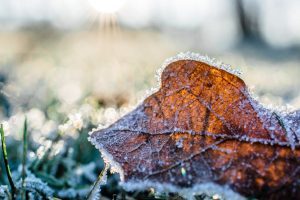
Winterizing your lawn is as important as maintaining it in the spring and summer months. Grasses work hard during their “dormant” months, gathering nutrients to recover from the stresses of the summer months and preparing for spring. It is important for all grass types to be winterized. Even in warmer climates, grasses need to be properly prepared for their dormancy. The following are things you should know before you winterize to prevent damaging your lawn.
Not All Grasses Are Created Equal
In other words, not all grass types should be treated the same when winterizing. There are several brands of fertilizer that claim they produce a formula that can be used when winterizing any type of grass. However, these types of fertilizers can actually harm some grass types, as not all grasses need the same nutrients during the winter months.
There are two groups of grasses: cool season grasses and warm season grasses. Cool season grasses consist of Fescues, Bluegrasses, Ryegrasses, and Bentgrass. You may also find the forage grasses of Timothy, Brome, and Orchard Grass in the cool season grass classification. Warm season grasses include Bahaigrass, Bermudagrass, Buffalograss, St. Augustine grass, Centipede grass, and Zoysia grass.
Cool Season Grasses Need to be Winterized Twice
When treating cool season grasses, you need to winterize in mid- to late fall and late summer. The amounts of nitrogen your fertilizer should have are different for the two applications as well. The first only needs about ½ pound of nitrogen per square foot, and the second should have a full pound per square foot.
Cool Season Grasses Take Most of Their Nutrients in During the Fall
Cool season grasses recover from the stress of summer and prepare for the winter months ahead by working to take in as many nutrients as possible as the temperature drops in the fall. They store these nutrients to help to break their dormancy in the spring, taking up to 75% of their nitrogen until the soil temperatures drop to the lower 30s.
Traditional Fertilization is NOT Recommended for Warm Season Grasses
Warm season grasses should also be fertilized; however, instead of using a traditional fertilizer, one should use a “potash” fertilizer. Potash fertilizers are those higher in potassium and lower in nitrogen. Warm season grasses that are given too much nitrogen, could be over-stimulated and be pushed to grow at a time when they should be preparing to be dormant.
Caring for your sod doesn’t have to be hard, but using the right kind for your needs is important to keep it beautiful. Whether you are needing new sod, or support with sod care, contact Emerald Sod today to learn more about the best sod for Colorado, applications, areas we serve, and pricing.
